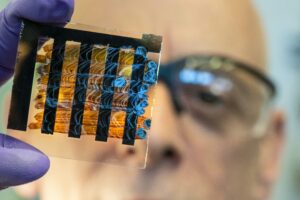It’s more than likely you’ve come across silicone in your kitchen. There’s quite possibly a silicone spatula, whisk, or measuring spoon in your drawers. But do you know the difference between silicone and plastic? This article delves into the insights of two experts on silicone, examining its safety, lifespan, and how it differs from plastic.
Understanding Silicone and Plastic
Oliver Jones, a professor of chemistry at RMIT in Naarm/Melbourne, explains that while plastics and silicones are both polymers, they exhibit different chemical compositions. He describes polymers as substances made of repeating simple sub-units forming long chains.
“Silicone is a generic term for a range of man-made polymers made up of a silicon-oxygen-silicon chain,” says Professor Jones. “Plastics are generally based on a carbon chain with various other atoms or molecules as side groups from the main backbone.”
Practical Differences in the Kitchen
At a more practical level, Nathan Kilah, a senior lecturer in chemistry at the University of Tasmania in Lutruwita, highlights the main difference between silicone and plastics used in kitchens: thermal stability. According to Dr. Kilah, the silicon-oxygen bonds in silicone provide a degree of stability that other plastics lack, making it highly effective for cookware.
He notes that a plastic spatula, as opposed to a silicone one, is more likely to melt or chip away. The flexibility of silicone is also an asset, particularly with products such as muffin or cupcake trays.
Safety and Standards of Silicone
Professor Jones assures that silicone utensils and cookware are “safe to use for their intended purpose.” He explains that silicone utensils, like all food contact materials, undergo extensive testing. Different grades of silicone exist, with some rated to withstand higher temperatures.
When choosing kitchen utensils, Professor Jones advises looking for two main codes for food-grade silicone: the German food safety standard (LFGB) and the US Food and Drug Administration (FDA). While the LFGB is considered slightly stricter, both codes aim to regulate silicone products to prevent harmful chemicals from being released into food, even under extreme temperatures.
Dr. Kilah recommends checking the manufacturer’s advice for each product. “Silicone will be labelled as suitable for dishwasher, microwave, oven, or freezer and is generally quite clearly labelled,” he says. The main caution is not to overheat the silicone and to use products as intended.
Environmental Impact and Longevity
Concerns about microplastics have led to questions about silicone’s environmental impact. Professor Jones states that silicone utensils and cookware “tend to be quite inert and don’t break down very easily.” While these products can wear down and break up over time, the resulting particles are larger than microplastics.
“I’ve yet to read a paper where they identified particles from food or the environment as silicone-based,”
Professor Jones adds. He suggests that while more research could be beneficial, the risks are low. Even if particles were generated, they would likely be inert and pass through the body without harm.
Dr. Kilah points out that changes in the color of silicone products or visible cracks and damage indicate that the item is nearing the end of its lifespan. After prolonged or rough use, mechanical breakdown can occur, but conventional use shouldn’t cause smaller particles to form or shed.
Conclusion
As silicone continues to play a significant role in modern kitchens, understanding its properties, safety, and environmental impact becomes crucial. Both Professor Jones and Dr. Kilah emphasize the importance of using silicone products as intended and adhering to safety standards. As consumers become more environmentally conscious, the durability and inert nature of silicone offer a practical alternative to traditional plastics.
Looking ahead, further research into the long-term environmental impact of silicone could provide deeper insights, ensuring that this versatile material remains a staple in kitchens worldwide.







